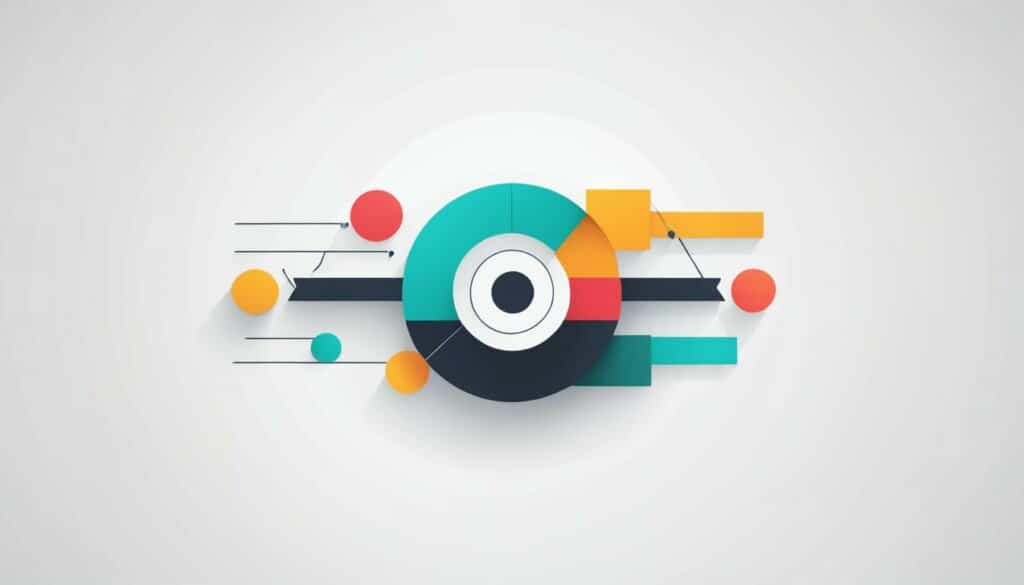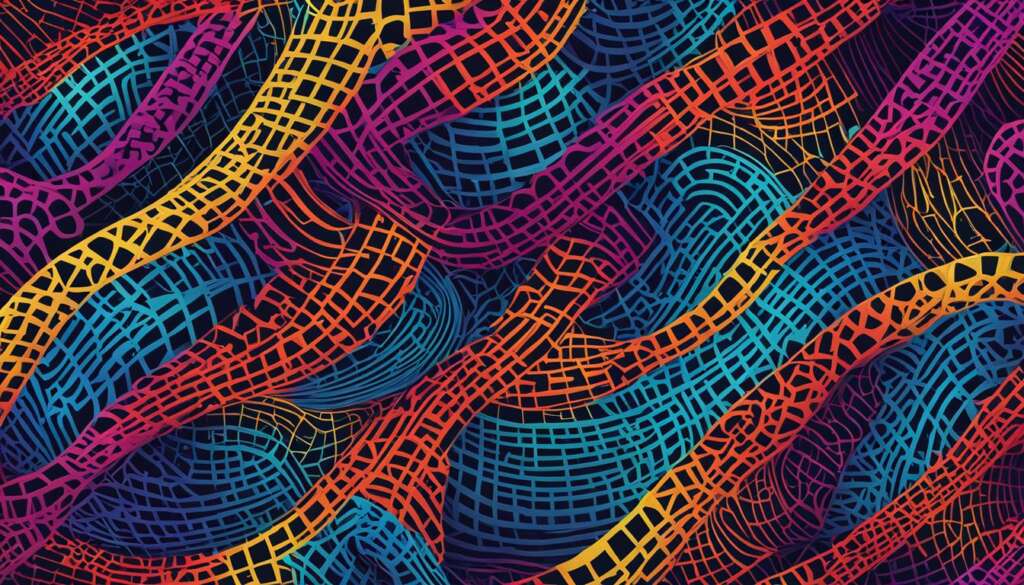Table of Contents
Welcome to our quick guide on how to tell if something was written by ChatGPT, detect ChatGPT written content, and identify ChatGPT generated text. ChatGPT is a powerful generative AI tool renowned for its ability to mimic human writing. However, it is crucial to be able to distinguish ChatGPT-authored text from human writing to ensure accuracy and authenticity.
In this guide, we will explore various techniques and strategies that will help you develop the skills needed to differentiate ChatGPT’s writing from that of a human writer. By understanding AI prompting techniques, specifying the output format, iterating with multiple attempts, using long prompts and sets of prompts, and providing explicit constraints, you can become proficient in recognizing ChatGPT’s language patterns and writing style.
By utilizing these strategies, you will be able to confidently identify if something was written by ChatGPT, allowing you to separate generated text from human-authored content. Let’s dive into each technique in detail and enhance your ability to spot ChatGPT’s writing.
Understanding AI Prompting Techniques
AI prompting techniques are essential for distinguishing ChatGPT’s writing from that of a human. By familiarizing yourself with how ChatGPT responds to different prompts and its unique language patterns, you can begin to recognize and differentiate content authored by ChatGPT. In this section, we will explore diverse approaches and provide examples to help you develop the skills required for this task.
When examining AI-generated content, it is crucial to analyze the language patterns utilized by ChatGPT. These patterns often vary from those employed by human authors, serving as a valuable clue for identifying ChatGPT’s contributions. By discerning and comprehending these distinctive language patterns, you can spot content that is likely to be generated by ChatGPT.
For example, ChatGPT frequently exhibits an inclination to provide excessively detailed explanations or an excess of information on a given topic. This verbosity and the use of technical jargon may be indicative of content produced by ChatGPT. Furthermore, the AI may demonstrate consistent tendencies such as repetition or excessive qualification, which can help identify its language patterns.
In addition to language patterns, analyzing the overall structure and coherence of the text can help in distinguishing ChatGPT’s contributions. While ChatGPT can generate accurate and contextually relevant information, it may struggle with maintaining a consistent flow and logical progression throughout a piece of writing. By paying attention to instances where the text feels disjointed or lacks cohesion, you can identify potential ChatGPT-generated content.
It is worth noting that AI-generated text may not always exhibit clear-cut characteristics. As AI continues to advance, it becomes increasingly difficult to distinguish between AI and human writing. However, by familiarizing yourself with ChatGPT’s language patterns and closely evaluating the structure and coherence of the text, you can improve your ability to recognize and differentiate ChatGPT-authored content.
Example of Identifying ChatGPT’s Language Patterns
Let’s consider a prompt related to space exploration:
Human Prompt: “Could you explain the process of launching a rocket into space?”
Based on this prompt, a ChatGPT-generated response might exhibit the following language pattern:
ChatGPT Response: “Sure! The process of launching a rocket into space involves a series of complex procedures. Firstly, the rocket undergoes pre-launch preparations, including fueling and system checks. Next, the launch vehicle, along with the payload, is transported to the launch site. After that, various systems, including guidance, navigation, and control, undergo final verifications. Finally, the rocket is ignited, and the thrust generated propels it into space.”
In this example, the ChatGPT response demonstrates a comprehensive explanation of the rocket launch process, featuring technical jargon and a step-by-step breakdown. The excessive detailing and adherence to straightforward language patterns are indicative of ChatGPT-generated content.
By recognizing these language patterns, structural inconsistencies, and excessive information, you can distinguish AI-generated content, such as the one provided in the example above, from human writing.
| Cues for Identifying ChatGPT-authored Content | Possible Indicators |
|---|---|
| Proneness to provide excessive details or jargon | The use of technical terms, verbose explanations, and an abundance of information |
| Consistent language patterns | Repetition, excessive qualification, or a distinct style |
| Structural inconsistencies and lack of coherence | Disjointed flow, disconnected ideas, or abrupt transitions |
Understanding AI prompting techniques, recognizing ChatGPT’s language patterns, and analyzing the structure of the text are essential skills for distinguishing ChatGPT-authored content and identifying AI-generated text. Armed with these strategies and insights, you can confidently assess the origin of the content and ensure its accuracy and reliability.
Specifying Output Format
One effective way to detect if something was written by ChatGPT is by examining the output format. ChatGPT allows you to specify how it formats its replies, such as in the form of bullet lists, tables, or even HTML code. By analyzing the formatting of the text, you can gain insights into whether it was generated by ChatGPT or a human writer.
When evaluating the output format of a text, consider the following:
- Lists: ChatGPT often generates content in the form of bullet lists or numbered lists. These lists are commonly used to organize information and present it in a concise manner. If the text includes bulleted or numbered items, it may suggest that it was generated by ChatGPT.
- Tables: ChatGPT can create tables to present data or information in a tabular format. These tables are structured with rows and columns, making it easier to compare and analyze data. If you come across a text that includes a table, it could indicate that it was written by ChatGPT.
- HTML Code: ChatGPT allows you to specify output in the form of HTML code. This allows for more advanced formatting and customization options. If you notice any HTML tags or coding elements in the text, it may be a sign that ChatGPT was involved in its generation.
By paying attention to the output format, you can uncover clues that help you recognize if a text was written by ChatGPT. The presence of bullet lists, tables, or HTML code can be indicative of AI-generated content.

Examining the output format is just one strategy in identifying ChatGPT’s writing. In the next section, we will explore the importance of iterating with multiple attempts to further refine your ability to spot ChatGPT-generated content.
Iterating with Multiple Attempts
When working with ChatGPT, it is essential to understand that the desired output may not always be achieved on the initial attempt. However, by engaging in an iterative process and refining the prompts, you can guide ChatGPT to generate the desired result.
Iterating with multiple attempts allows you to observe specific language patterns and writing styles that are unique to ChatGPT. By analyzing the generated content in each iteration, you can start to recognize if something was written by the AI.
“Iterating with multiple attempts provides valuable insights into ChatGPT’s language patterns and writing style, enabling us to distinguish its content from human-authored text.”
In each iteration, carefully review the generated text, paying close attention to sentence structure, vocabulary, and overall coherence. This process allows you to become familiar with ChatGPT’s output and develop a deeper understanding of its capabilities.
- Begin by formulating a clear and concise prompt that aligns with your desired outcome.
- Submit the prompt to ChatGPT and carefully review the generated content.
- Analyze the language patterns, sentence structure, and overall quality of the text.
- Identify any inconsistencies or markers that may suggest the content was written by ChatGPT.
- Refine the prompt based on your observations and iterate with another attempt.
- Repeat this process until you achieve the desired output or gain enough clarity to determine if the content was generated by ChatGPT or a human writer.
By iterating with multiple attempts, you’ll gain valuable experience in recognizing ChatGPT’s language patterns and distinguishing its content from human-authored text.
Example:
Let’s consider an example where you are using ChatGPT to write a product review. In the first attempt, ChatGPT might provide a generic and bland description. However, by iteratively refining your prompt and providing more specific instructions, you can guide ChatGPT to highlight the unique features, benefits, and real-life applications of the product.
| Iteration | Generated Content |
|---|---|
| 1 | The product is good and has great features. |
| 2 | This product stands out due to its exceptional features like the advanced AI technology, sleek design, and high-quality materials. |
| 3 | With its cutting-edge AI technology, elegant aesthetics, and durable build, this product offers a standout experience. It seamlessly integrates with your smart home devices and delivers impressive performance. |
As you can see from the example, by iterating with multiple attempts and refining the prompts, you can guide ChatGPT to generate a more comprehensive and persuasive product review.
Using Long Prompts and Sets of Prompts
When it comes to distinguishing ChatGPT-authored text from human writing, crafting a comprehensive and specific prompt is key. By providing long prompts that offer extensive information, you give ChatGPT the context it needs to fully understand your requirements. This increases the likelihood of generating content that is consistent with ChatGPT’s language patterns and style.
Additionally, using sets of prompts and providing detailed instructions can help elicit responses that are more likely to be generated by ChatGPT. By carefully structuring your prompts and specifying the information you’re seeking, you can leverage ChatGPT’s capabilities to recognize and identify its generated content.
“By combining long prompts with sets of prompts, you can create a dialogue with ChatGPT that helps uncover its distinctive language patterns and recognize text written by the AI.”
To illustrate the effectiveness of long prompts and sets of prompts, consider the following example:
| Prompt | ChatGPT Response |
|---|---|
|
Long Prompt: |
ChatGPT Response: |
In this example, the financial analyst sets an extensive prompt, clearly specifying the required information. By using a set of prompts as follow-up questions, they engage in a dialogue with ChatGPT that helps uncover the AI’s distinctive language patterns and generate a response that aligns with ChatGPT’s writing style. Through careful crafting and specific instructions, the output can be identified as generated by ChatGPT.
Providing Explicit Constraints to a Response
Setting explicit constraints to the AI’s response is another effective way to detect ChatGPT’s writing. By specifying requirements and limitations, such as asking for information within a certain time frame or categorizing data by specific criteria, you can observe how ChatGPT follows these constraints. This helps you spot the generated content that was written by ChatGPT rather than a human writer.
Examples of Specific Constraints:
- Narrowing the Time Frame: Request the AI to provide information from a particular era, focusing on a specific range of years relevant to your query. This constraint allows you to detect if the content is relying on AI-generated historical data rather than firsthand knowledge of the time period.
- Categorizing Data: Ask ChatGPT to categorize a set of information into precise groupings or subsets. By examining how the AI has classified the data, you can determine if it is following logical patterns or producing inconsistent or illogical divisions.
- Limiting Length or Word Count: Instruct ChatGPT to provide a concise response within a fixed word count. If the AI generates a concise and well-structured answer that conforms to your word count constraint, it indicates that the response is likely generated by ChatGPT.
By applying explicit constraints to ChatGPT’s responses, you can better detect the writing generated by the AI. These restrictions allow you to identify patterns and behaviors unique to ChatGPT, helping you differentiate between human and AI-generated content.
Using explicit constraints can serve as a powerful tool in detecting ChatGPT-written content. By specifying clear requirements and limitations, you gain insight into how the AI responds and can discern its unique writing style and patterns. This knowledge is crucial in accurately identifying whether text was generated by ChatGPT or produced by a human writer.
Conclusion
In conclusion, the ability to identify if something was written by ChatGPT requires a multifaceted approach. By understanding AI prompting techniques, you can recognize the unique language patterns and distinguish ChatGPT-authored text from human writing. Analyzing the output format and style gives you valuable insights into the origin of the content.
Iterating with multiple attempts allows you to delve deeper into ChatGPT’s writing style and observe its specific patterns and tendencies. By using long and specific prompts, you can provide ChatGPT with sufficient context to generate more accurate responses.
Furthermore, providing explicit constraints to a response enables you to see how ChatGPT adheres to your requirements, helping you differentiate between AI-generated content and human-written text. By honing these skills and continuously practicing, you can enhance your ability to identify ChatGPT language patterns and determine its writing with greater precision.
Remember, familiarity with ChatGPT’s capabilities is key to becoming adept at recognizing its generated content. The strategies discussed in this guide provide a foundation for developing the skills necessary to discern ChatGPT-authored text and maintain authenticity and accuracy in your written content.
FAQ
How can I tell if something was written by ChatGPT?
There are several techniques you can use to identify if something was written by ChatGPT. These include analyzing the output format, understanding AI prompting techniques, and observing language patterns unique to ChatGPT.
What are AI prompting techniques?
AI prompting techniques involve understanding how ChatGPT responds to different prompts and its language patterns. By experimenting with prompts and analyzing ChatGPT’s generated content, you can recognize and distinguish ChatGPT-authored text.
How can I specify the output format to detect ChatGPT’s writing?
By analyzing the formatting of the text, such as bullet lists or HTML code, you can gain insights into whether it was generated by ChatGPT or a human writer.
How do I iterate with multiple attempts to identify ChatGPT’s writing?
By refining and iterating the prompts provided to ChatGPT, you can observe the AI’s language patterns and writing style, helping you determine if something was written by ChatGPT.
How can long prompts and sets of prompts help me distinguish ChatGPT-generated text?
Crafting comprehensive and specific prompts provides ChatGPT with enough context to understand your requirements. By using long prompts and sets of prompts with detailed instructions, you can elicit responses that are more likely to be generated by ChatGPT.
Can explicit constraints help me identify ChatGPT’s writing?
Absolutely. By specifying requirements and limitations, such as time frames or data categorization criteria, you can observe how ChatGPT follows these constraints, helping you distinguish its writing from human-authored content.
How do language patterns help me identify ChatGPT’s writing?
By observing and analyzing language patterns specific to ChatGPT, you can develop the skills necessary to discern ChatGPT-authored text and differentiate it from human writing. Practice and familiarity with ChatGPT’s capabilities enhance this ability.













